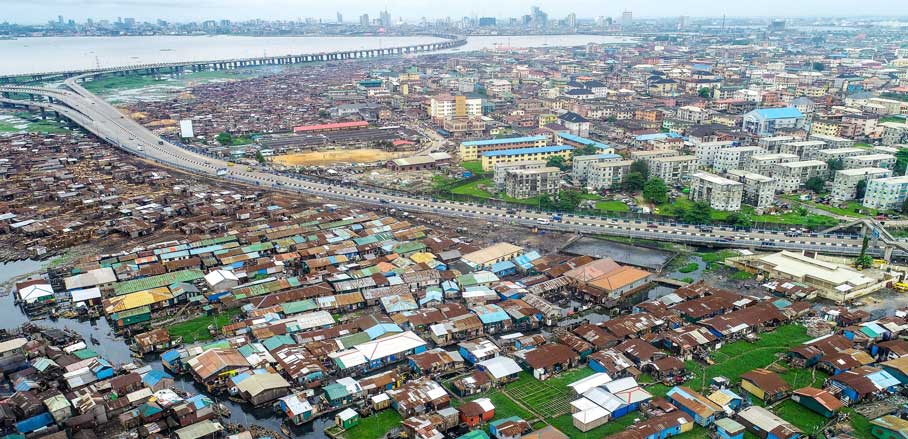Conceptualising The Liveable African City
What does liveability mean from an African cities’ perspective and how do we get there? Taibat Lawanson presents an unconventional and compelling take on this question.
What Does The “Liveable City” Mean For Africa?
The notion of the liveable city is repeatedly championed in contemporary urban discourse and practice. Given that Africa is the emerging urban frontier, what the liveable city means for Africa is very important.
Various attempts have been made to define the Liveable City, with a universally accepted consensus remaining elusive. A general understanding is that liveability is a cross-cutting concept that encompasses those place-based attributes of an urban location that contribute to an individual’s quality of life and wellbeing. Attempts to measure liveability vary widely, and range from aggregated city-level indicators to survey-based community-level indicators. The precise indicators depend on the place, time, and purpose of assessment, as well as on the value system of the assessor.
The most common global liveability assessments which feature African cities are the Mercer’s Quality of Living Survey, and the Economist Intelligence Unit’s Global Liveability Index. Most of the African cities featured perform poorly. Lagos is considered among the three worst places to live in the world, This may be because according to the Economist, important indicators include local weather and level of discomfort for international travellers, as well as the presence of international restaurants, sporting festivals, and access to private education and healthcare facilities. Based on this, it is safe to assume that the ‘objective’ ranking of global liveability indicators lean in favour of western perceptions of development and the level of relative comfort of foreign visitors to a city. This is problematic, especially since cities should be designed and developed to fit the needs and aspirations of local citizens.
From an urban planning perspective, the founding premise for liveability is that urban form and environment, economic values, and social sustainability are interconnected and that cities should be comprised of a built landscape that encourages sustainable living. Therefore, many urban planning policies advance the virtues of compact city development as the crucial paradigm to be applied to achieve liveability and/or sustainability. Even though liveability and sustainability are intimately connected, they are not the same. A sustainable city is not necessarily a liveable one, given that sustainability focuses on how urban areas can be designed to function in a more effective and environmentally efficient way, while liveability focuses on quality of life – the social conditions necessary to support personal and community wellbeing.
Across African cities, the major manifestation of the compact city design approach is the rise of speculative, developer-led high-density and high rise satellite cities and residential communities, all promising enhanced quality of life. However, while these high-density developments may support sustainability principles, it is widely believed that they pose too great a cost on individuals’ quality of life. For example, In Ethiopia, life in the Addis Ababa Condominiums is difficult as many residents are unable to adjust to the loneliness and socio-economic segregation that accompany life in the multi-storied buildings, with experts stating that the building design fails to sustain people’s ordinary, traditional way of life. High rise development in Kumasi, Ghana also has a low social acceptability, and a weak institutional capacity for the provision of basic services such as electricity and water. For example, perennial power cuts make use of elevators in such buildings risky.
Fundamental Aspects Of “Liveable Cities” Can Be Found In Many Of Africa’s Poor Urban Communities
Interestingly, the five fundamental aspects of liveable cities – robust and complete neighbourhoods, accessible and sustainable mobility, a diverse and resilient local economy, vibrant public spaces, and affordability – are present in many urban poor communities across Africa. Slums can provide affordable shelter and proximity to jobs, and communities are often social and supportive. Walking is the dominant form of mobility, though can be precarious and unsafe, partly due to the prioritisation of urban design for auto-mobility. Furthermore, slum-dwellers make up a large number of the service sector in cities, sell and consume fresh produce due to lack of electricity, produce innovative solutions for goods and services as urban adaptation. Most factory workers are slum dwellers and in fact, the working poor make up a dominant proportion of the working population of many cities. As most slum dwellers cannot afford to buy goods from urban areas because of the high prices, they buy from other locals and this, in turn, empowers the community.
While one cannot wish away the obvious challenges of life in slums, I believe they hold the key to enhancing the liveability of African cities. Therefore, what is required is an approach that sees slums beyond the current limited framing as a challenge to African cities that needs to be removed. This approach must see slums as an opportunity for rethinking and remaking contextualised liveable and sustainable African cities. The approach should prioritise the upgrading and regeneration of urban slums. This is potentially a win-win situation in that it does three things: it enhances the infrastructure that makes societies function effectively, it provides opportunities for local economic development, and it ensures that the social conditions that support community wellbeing are maintained. These are the sine qua non for the liveable African city.
- Conceptualising The Liveable African City - 3. May 2022
- Lagos: The Gaps Between Urban Policy and Urban Reality - 30. October 2018
